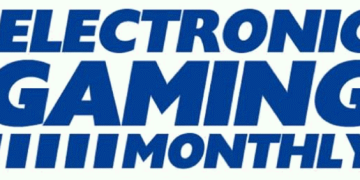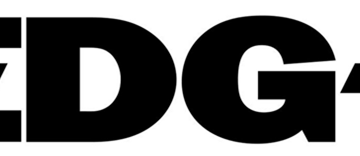Cointelegraph by Agne Linge
2025-06-09 11:00:00
cointelegraph.com

Opinion by: Agne Linge, head of growth at WeFi
Decentralized finance (DeFi) disrupting and outcompeting TradFi has long been the dream of many innovators in the crypto field. Some of them lauded the over $40 billion in net inflows to spot Bitcoin (BTC) exchange-traded funds (ETFs) — recorded in the US since last January’s regulatory drama — as a final victory for the industry.
While that indicates an increasing number of investors are interested in crypto and treat it as a legitimate asset, a U-turn on its core principles of self-custody, permissionless access and borderless value transfer is a big win for the industry. Crypto-based ETFs are simply centralizing what was built to resist centralization.
Spot crypto ETFs
The advocates of crypto-based ETFs have a convincing case for the adoption of these instruments. Market-traded ETFs open the doors for a whole new class of investors, previously reluctant to put their money into crypto due to the lack of regulations and technological barriers to understanding the crypto infrastructure. Ease of access and process streamlining are the main selling points of spot crypto ETFs, allowing for a familiar way to diversify into new assets through a brokerage account instead of real ownership. Moreover, greater regulatory clarity elevates the crypto industry’s profile and gives more confidence to potential investors. For many, crypto ETFs represent a gateway into digital assets and a version of crypto that feels safer, simpler and more aligned with traditional financial norms.
Not all ETFs are born the same, however, and the design of these funds varies jurisdiction by jurisdiction and shows how much actual “crypto” there is. Hong Kong operates a unique, in-kind ETF model, mandating actual crypto backing and allowing customers to deliver or receive the underlying coin in exchange for the ETF shares. It is drastically different from the US cash-based model, which requires the creation and redemption of ETF shares to be processed in US dollars.
This cash-based approach abstracts away from crypto and adds a layer of fiat currency. This strengthens the SEC’s ability to detect manipulation and fraud and protect the investor community with regulations designed initially for TradFi. It is not just a technicality: Wall Street funds are selling market volatility and do not care about the underlying assets.
Exposure isn’t equivalent to ownership
Spot ETFs are an attempt to normalize crypto and make it conform to the architecture of TradFi. Yet this attempt is the Procrustean bed for digital assets — arbitrary adherence to non-native standards inevitably introduces additional risks. Holders of ETF shares face custodian risks, entrusting third parties with assets meant to be held directly. They also have management fees that erode returns over time and are subject to tracking errors, where the ETF’s performance may diverge from the underlying asset due to higher trading costs or system inefficiencies. These problems are endemic to TradFi, and DeFi was supposed to solve them. Instead, ETFs trap crypto inside the very financial cage it was meant to escape. Investors get exposure but lose empowerment. It’s like watching a lion through bars and calling it wild.
Recent: Crypto ETFs won’t lose ‘their luster’ as wallet adoption grows
What’s most important about spot ETFs is that they go against the fundamental principles of DeFi and some coins’ tokenomics. Major TradFi players are rapidly amassing BTC and Ether (ETH) holdings, crowding out crypto asset managers, with BlackRock iShares Bitcoin Trust seeing almost $5 billion amid outflows from other players. For ETH and Solana (SOL), which are on track to get their own ETFs approved, large centralized players could create chokepoints in the proof-of-stake confirmation mechanism, potentially cracking the ecosystems. The ETF’s hold-and-forget model might prove deadly for crypto.
Unlike actual coins, the ETF shares have no convenience yield — ETF owners lack the ability to participate in governance voting, staking to earn yield and income-generating DeFi protocols. The ETF-caused concentration essentially hands the institutions control over some ecosystems, allowing them to dictate their conditions and impose their decisions onto the wider community.
Convenience at the cost of ethos
Spot ETFs fundamentally miss the point of crypto. The beauty of DeFi lies in self-custody: the idea that individuals should hold their assets, control their keys, and operate free from intermediaries. That is the reason and the foundation for the scale of innovation in the crypto industry today. ETFs sell exposure to BTC and ETH (and other altcoins in the future), but simple price fluctuations do not constrain the value of crypto. DeFi promises a better financial system, but without agency and community engagement, it will never reach this goal.
Yes, ETFs are convenient. Yes, ETFs have more oversight. And yes, ETFs managed by well-known firms such as BlackRock and Fidelity might give retail investors a feeling of safety and transparency. Yet the crypto industry must not forget the ethos of cryptocurrencies and the industry’s core principles. Direct ownership protects the financial freedom of individual owners, unlocks additional income streams, and keeps innovation and improvement going through community participation. In a system originally designed to remove the need for trust, returning to trusted intermediaries is more than ironic — it’s a regression.
Opinion by: Agne Linge, head of growth at WeFi.
This article is for general information purposes and is not intended to be and should not be taken as legal or investment advice. The views, thoughts, and opinions expressed here are the author’s alone and do not necessarily reflect or represent the views and opinions of Cointelegraph.
Explore new destinations with ease using the Garmin Drive 52 GPS Navigator! With over 17,988 ratings and a solid 4.4/5-star rating, this GPS system has been a top choice for travelers. Over 500+ units were bought in the past month, all for only $144.99.
This 5″ GPS navigator comes with essential driver alerts, real-time travel data, and external memory storage. The simple on-screen menus and bright, easy-to-see maps make it easy to navigate wherever you are. Plus, it’s road trip-ready with The HISTORY Channel database, featuring notable historic sites and much more to enhance your journey.
Don’t miss out—get your hands on the Garmin Drive 52 today for a smoother ride ahead! Buy Now for $144.99 on Amazon!
Help Power Techcratic’s Future – Scan To Support
If Techcratic’s content and insights have helped you, consider giving back by supporting the platform with crypto. Every contribution makes a difference, whether it’s for high-quality content, server maintenance, or future updates. Techcratic is constantly evolving, and your support helps drive that progress.
As a solo operator who wears all the hats, creating content, managing the tech, and running the site, your support allows me to stay focused on delivering valuable resources. Your support keeps everything running smoothly and enables me to continue creating the content you love. I’m deeply grateful for your support, it truly means the world to me! Thank you!
|
BITCOIN
bc1qlszw7elx2qahjwvaryh0tkgg8y68enw30gpvge Scan the QR code with your crypto wallet app |
|
DOGECOIN
D64GwvvYQxFXYyan3oQCrmWfidf6T3JpBA Scan the QR code with your crypto wallet app |
|
ETHEREUM
0xe9BC980DF3d985730dA827996B43E4A62CCBAA7a Scan the QR code with your crypto wallet app |
Please read the Privacy and Security Disclaimer on how Techcratic handles your support.
Disclaimer: As an Amazon Associate, Techcratic may earn from qualifying purchases.






















































































![[DEBUT COVER] Intergalactic Bound – Yunosuke / CircusP [MIKU EXPO 10th]](https://techcratic.com/wp-content/uploads/2025/08/1755598927_maxresdefault-360x180.jpg)


















